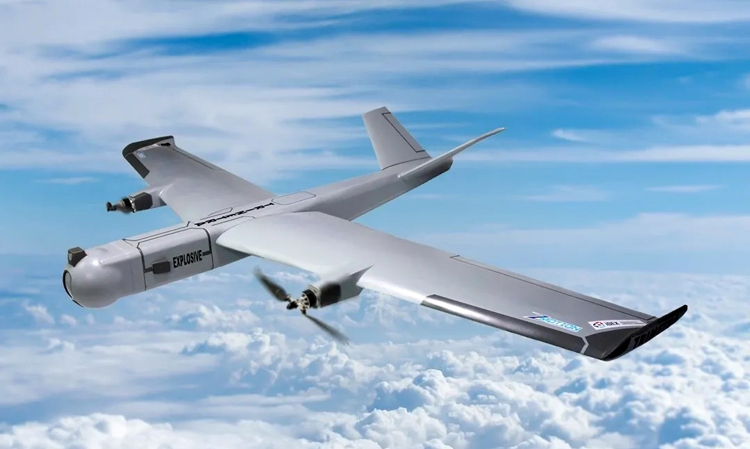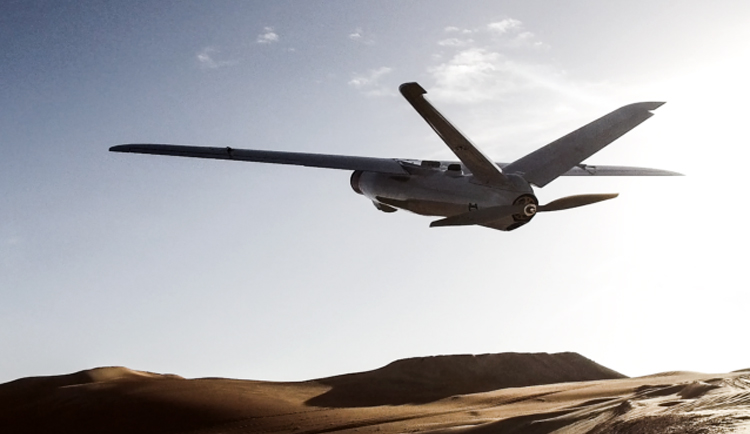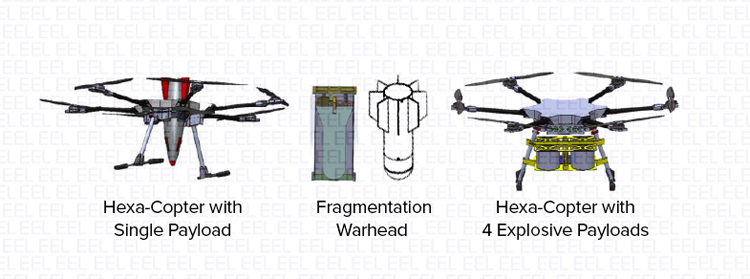INDIAN ARMED FORCES CHIEFS ON OUR RELENTLESS AND FOCUSED PUBLISHING EFFORTS

SP Guide Publications puts forth a well compiled articulation of issues, pursuits and accomplishments of the Indian Army, over the years

"Over the past 60 years, the growth of SP Guide Publications has mirrored the rising stature of Indian Navy. Its well-researched and informative magazines on Defence and Aerospace sector have served to shape an educated opinion of our military personnel, policy makers and the public alike. I wish SP's Publication team continued success, fair winds and following seas in all future endeavour!"

Since, its inception in 1964, SP Guide Publications has consistently demonstrated commitment to high-quality journalism in the aerospace and defence sectors, earning a well-deserved reputation as Asia's largest media house in this domain. I wish SP Guide Publications continued success in its pursuit of excellence.
Indigenous Loitering Munitions
Loitering munitions have revolutionised the battlefield in recent years and more of these can be expected to fill up the airspace in future
 |
The Author is Former Director General of Information Systems and A Special Forces Veteran, Indian Army |

It has been reported in these columns earlier that three different types of indigenously designed and developed loitering munitions by Economic Explosives Ltd in partnership with the Bengaluru-based start-up ZMotion Autonomous Systems Pvt Ltd were successfully tested in Ladakh from March 21 to 23, 2022 in high altitude. The tests were conducted at altitudes of over 15,000 feet and all the three loitering munitions achieved their endurance targets after taking off from high altitude areas. The three loitering munitions (two fixed wing variants and one hexacopter) are expected to be at least 40 per cent cheaper than imports from Israel and Poland.
The above trials were facilitated by the Army Design Bureau (ADB) to rate the performance and safety standards of these systems. These man portable munitions can take off with a 4 kg warhead, flying for an hour and homing at ground-based targets with precision. Such munitions, much cheaper to produce than armed drones, can cause disproportionate damage to conventional targets like ground-based bunkers, command centres, artillery and armoured formations.
Had India opened the defence sector to the private industry in early 2000s, we would have possibly been at par with China in UAVs and loitering munitions by now
Concurrently, there were news reports that the Indian Army has procured 100 x WARMATE Micro Loitering Munitions from Poland for the Army’s Special Forces. With a range of 30 km, altitude 300 metres and 5.7 kg payload (high explosive and thermobaric), these can be effectively used against enemy forces and lightly armoured vehicles. Another news report of June 27, 2022, indicated that Poland’s WB Group has completed delivery of around 120 WARMATE 3.0 fixed-wing loitering munitions to the Indian Army. The report stated that these are to equip artillery units to engage permanent and dynamic targets in plains, deserts, semi-desert, mountainous terrain and high-altitude areas. The media report further said that the procurement of ten sets comprises ten launchers, 30 forward observation stations and 120 loitering munitions, all covered under a five-year comprehensive maintenance contract.

Now there is more good news about indigenous loitering munitions, in that, a team of young engineers of TATA Advanced Systems Limited (TASL) has developed indigenous loitering munitions – the ALS 50. The ALS 50 successfully demonstrated its strike capability during tests conducted at Pokhran firing ranges on September 22, 2022. According to sources, the ALS 50 accurately hit the ground target with an explosive warhead during trials. This indigenous loitering munitions is capable of operating in all types of operational areas including from difficult terrain and high altitude areas.
The Indian Armed Forces have been looking to induct a range of loitering munitions, relatively low cost 'suicide drones' that can be used to accurately take down high value targets
The ALS 50 is an autonomous system designed for Vertical Take Off and Landing (VTOL). The VTOL capability gives the system the ability to operate in areas where limited space is available, like narrow valleys, fortified mountain positions, small jungle clearings and the decks of warships. The ALS 50, which can take off like a quadcopter, transitions into fixed wing mode during flight for long distance travel; also demonstrated its ability to operate from high altitude areas during tests in Ladakh earlier this year. The autonomous targeting system enables accurate identification and homing on to a pre-determined target. The system can also be scaled up to increase range and payload capability, as per requirements of the Armed Forces. Future development can also include integration of Artificial Intelligence (AI) and swarming capabilities.


Loitering munitions have revolutionised the battlefield in recent years including in the ongoing conflict in Ukraine. More and more of these can be expected to fill up the airspace in future. The Indian Armed Forces have been looking to induct a range of loitering munitions; relatively low cost 'suicide drones' that can be used to accurately take down high value targets like command centres, missile launchers and enemy armour. Looking back one can say that had India opened the defence sector to the private industry in early 2000s, we would have possibly been at par with China in unarmed aerial vehicles (UAVs) and loitering munitions by now.
The requirement of various types of loitering munitions in the Armed Forces is large considering that these would also be used in swarms in future conflicts
According to news reports of September 27, 2022, the Army will soon induct loitering munitions amid the continuing face-off with China in Eastern Ladakh. The report says that delivery of precision strike kamikaze drones is set to begin under an emergency procurement contract inked with an Israeli-Indian joint venture in 2021. Media has quoted an unnamed defence official who said, “The Army is also in the process of procuring indigenously developed advanced loitering weapon systems with enhances strike capabilities. There has been an enthusiastic response from Indian companies in manufacturing such systems.”
The above developments in loitering munitions are indeed encouraging and the ALS 50 is reportedly is to be inducted into the Armed Forces in the near future. At the same time, the requirement of various types of loitering munitions in the Armed Forces is large considering that these would also be used in swarms in future conflicts. The requirement, therefore, is of mass production and minimal red tape for faster induction.





